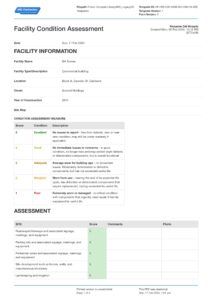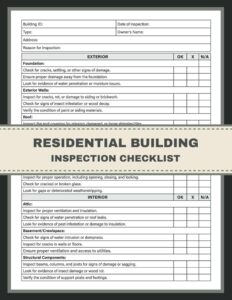Ever wondered what really happens during an electrical home inspection? It’s not just a quick glance at a few outlets. A thorough electrical inspection is a crucial step in ensuring the safety and functionality of your home’s wiring and components, whether you’re buying, selling, or simply maintaining your property. It uncovers potential hazards, identifies outdated systems, and gives you a clear picture of what needs attention.
Think of it this way: your home’s electrical system is its nervous system. If something is amiss, it can lead to flickering lights, tripping breakers, or, in severe cases, dangerous electrical fires. That’s why having a professional eye scrutinize every wire, panel, and switch is non-negotiable for peace of mind. But how do inspectors document all this information clearly and effectively?

This is where a well-structured system becomes invaluable. A good electrical home inspection report template isn’t just a formality; it’s a comprehensive document that translates complex technical findings into understandable insights. It helps inspectors maintain consistency, ensures no critical detail is missed, and provides homeowners with a clear roadmap for any necessary repairs or upgrades.
What Goes Into a Comprehensive Electrical Home Inspection Report?
When a professional inspector comes to assess a home’s electrical system, they’re looking at much more than just whether the lights turn on. Their goal is to identify safety hazards, potential deficiencies, and areas that do not meet current electrical codes. The report they generate needs to be incredibly detailed, yet easy for a homeowner to understand, outlining everything from the service entrance to individual receptacles.
One of the first critical areas is the main service panel, also known as the breaker box. The inspector will check its condition, ensure it’s properly grounded, and look for signs of overheating, corrosion, or outdated components like fuse boxes. They’ll verify that the wiring within the panel is tidy and correctly terminated, and that all breakers are appropriately sized for their circuits. Any missing knockouts or improper wiring methods are immediately noted as potential safety issues.
Moving beyond the main panel, the inspector will examine the type and condition of the wiring throughout the home. This includes checking for aluminum wiring, knob-and-tube wiring, or any exposed or damaged wiring. They’ll assess the functionality and safety of all accessible receptacles (outlets), ensuring they have proper polarity and grounding. Switches for lights and other fixtures are also tested for smooth operation and secure mounting.
Safety devices are another major focus. This means checking that Ground Fault Circuit Interrupters (GFCIs) are present and functioning correctly in areas like kitchens, bathrooms, garages, and outdoors, where water exposure is a risk. Arc Fault Circuit Interrupters (AFCIs) are also tested in bedrooms and other living areas to protect against arcing faults that can lead to fires. These devices are crucial for modern electrical safety standards.
Furthermore, the inspection often extends to permanent light fixtures, ceiling fans, smoke detectors, and carbon monoxide detectors to ensure they are properly installed, wired, and operational. The inspector will also look for evidence of DIY electrical work that might not meet code or could pose a hazard. Every finding, whether it’s a minor defect or a major safety concern, needs to be documented with precision.
Key Elements to Document
- Service Entrance and Meter Base condition
- Main Electrical Panel assessment (type, condition, grounding, bonding)
- Branch Circuit Wiring (type, condition, routing, protection)
- Outlets and Switches (functionality, grounding, polarity)
- GFCI and AFCI Devices (presence, location, test results)
- Light Fixtures and Ceiling Fans (secure mounting, wiring integrity)
- Smoke and Carbon Monoxide Detectors (location, test date, functionality)
- Existence of any visible hazards (exposed wiring, overloaded circuits, improper splices)
- Recommendations for repairs, upgrades, or further evaluation
Why Using a Standardized Template Makes a Difference
Imagine an inspector trying to remember every detail for every inspection without a consistent method. It would be nearly impossible to provide a thorough and reliable account. This is precisely why having a robust electrical home inspection report template is not just convenient, but essential. It ensures consistency across all inspections, leading to more professional and dependable results.
A standardized template acts as a checklist, guiding the inspector through every critical component of the electrical system. This minimizes the risk of overlooking a significant issue, which could have serious safety implications down the line. For the homeowner, it means they receive a comprehensive report that is easy to read and understand, clearly outlining what was inspected, what was found, and what actions are recommended. This clarity is invaluable for budgeting for repairs or negotiating during a home purchase.
Beyond mere completeness, a well-designed template enhances professionalism and builds trust. It demonstrates that the inspection process is systematic and thorough, not haphazard. It also provides a consistent framework for comparisons if multiple inspections are conducted over time, or if different properties are being evaluated. This consistency makes the report a powerful tool for informed decision-making and ensures the home’s electrical safety is documented for years to come.
Having a clear and detailed electrical home inspection report template streamlines the entire process, making it more efficient for inspectors and more valuable for homeowners. It’s a testament to thoroughness, ensuring that every wire, panel, and outlet is considered, and that any potential hazards are clearly brought to light. Ultimately, it’s about providing peace of mind and promoting a safer living environment.
A well-documented report is more than just a piece of paper; it’s a detailed blueprint of your home’s electrical health. It serves as a critical reference point for future maintenance, upgrades, or even for insurance purposes. By consistently using a comprehensive electrical home inspection report template, inspectors empower homeowners with the knowledge they need to make informed decisions about one of their property’s most vital systems, ensuring safety and efficiency for years to come.



